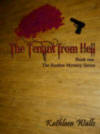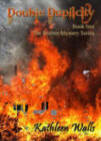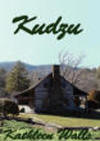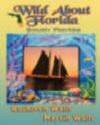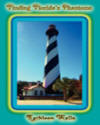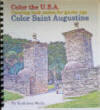Experience Kitsap Peninsula, Washington
Story and Photos
by Kathleen Walls
Kitsap Peninsula is just minutes away from Seattle, but it’s another world. A place of diversity, both physically and culturally. It’s home to Native American Tribes, has one town with a Viking heritage, and is a diners and watersports lover’s heaven, with a lot of history.

Bainbridge Island
I entered the peninsula by ferry from
Seattle to
Bainbridge Island. The island is walkable but the ferry
takes cars over. You can bring bikes or scooters, these board
downstairs through the car entrance.
Tour Bainbridge
is a great way to see the island. Our drivers, Paul and Mark,
were wonderful and so knowledgeable.
Streamliner Diner
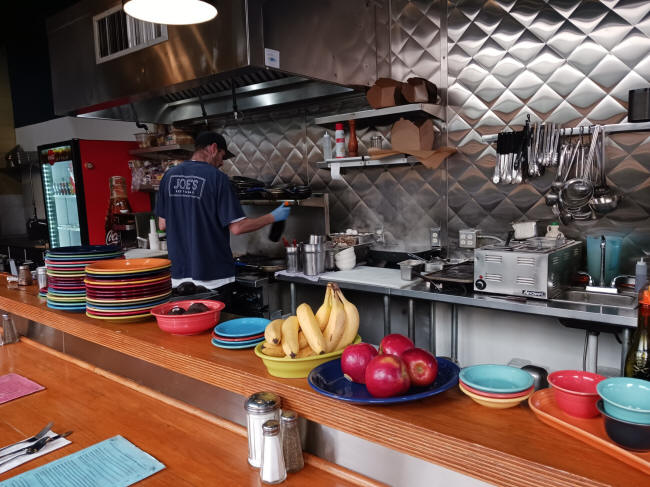
Streamliner Diner is a good breakfast stop. It’s a short
walk from the ferry next to the Chamber of Commerce and has
brochures about places to see out front. Inside you get
out-of-this-world biscuits, fresh fruit, or any variety of
breakfast dishes.
Marketplace
Marketplace is a delicatessen, coffeehouse, and taproom.
It’s a favorite local spot on Pleasant Beach. The sandwiches
are filling and delicious. I had the Tuna, and it was so
hearty, I ended up sharing with a cute doggie at the next
table. The island is very pet friendly.
Earth &
Vine is attached to The Marketplace. It’s a wine bar with
live music in the evening.
Pegasus Coffee House
If you’re a coffee connoisseur,
Pegasus teaches all the things you didn’t know about coffee
from the locations they purchase the beans by Direct Trade, to
roasting and grinding. We had a demonstration, including
tasting of several different kinds from light to dark roast.
I’m not a coffee drinker but enjoyed the presentation.
Hey Day
Farm is a 25-acre sustainable family farm. The main area is
in the turn-of-the-century Pederson farmhouse. The home and
grounds almost became another cookie cutter development but was
saved as a dining and event place. They offer Community Dinners
on most Thursday and Friday nights. They’re small events
accommodating less than 100 people, so make a reservation. Our
chicken was fantastic. Naturally, they offer local wines.
The grounds are gorgeous, I saw flowers,
from roses to wildlflowers, shrubs, and some blooming fig trees
near the commercial bakery that is housed in the barn. Boy, the
smell of fresh baked bread coming out of those windows was
delightful.
Japanese American Exclusion Memorial
Bainbridge Island was the first place
where the government removed Japanese Americans and put them in
American-style concentration camps during WWII. The year 2022
marks the 80th anniversary the removal.
Japanese
American Exclusion Memorial was built to remind us that
this should never happen again.
On March 30, 1942, armed American Soldiers
marched 276 men, women, and children of Japanese descent aboard
a ship to be sent to exclusion camps. Most of them were
American citizens.
I recently visited the Memorial on a tour
of the island and met with Lilly Kodoma, who was seven years
old, when she along with her family was one of those Japanese
Americans removed under President Franklin D. Roosevelt’s
Executive Order 9066 and Civilian Exclusion Order No. 1.
Lillie met us near the Memorial’s entrance
where a placard shows a photo of the people being marched over
a wooden bridge to the ferry that would take them away. Most
were leaving the only home they had ever known.
Lilly began telling of her memories in her
quiet voice. “We were the very first community to be excluded
under that executive order rather than larger cities like San
Francisco and Seattle.”
She said, “Because we were the first, we
got a lot of press coverage.” She pointed to a little girl near
the middle of the photo. “That’s me holding my little brother’s
hand. I was seven. My brother was two; you can see my mother
holding my baby sister who was nine months old. My other
sister, she’s somewhere to the back; you can’t see her in the
picture.”
Just before you reach the beginning of the
Memorial’s cedar wall, there’s a granite semicircular wall that
stands about eight feet high with protruding stone seats.
Posted on the granite, there is an engraved black wood panel
with the words “Nidoto Nai Yoni–Let It Not Happen Again.”
The grounds surrounding the memorial are
natural landscaping with native species. The wall curves and
has an overhanging roof with a Japanese feel. There are hooks
where visitors can hang commemorative items. Each family is
mentioned in wood plaques. Lilly pointed out her family and her
name.
When you reach the end of the wall at the
historic Eagledale Ferry Dock, additional artwork continues to
tell the story. There are several rusted steel sculptural
pieces by Vaughan, Washington artists Anna Brones and Luc
Revel, and a metal gate by artist John Buday.
Near the end of the boardwalk where the
people would have boarded the ferry, there are rows of shoes.
Shoes are so appropriate here. When you have walked this path
from to the dock at Eagledale, you have literally walked a part
of our not-so-pleasant history. Walking it with Lilly Kodoma
who lived that history was a treat I won’t forget.
You can take the self-guided tour, but
groups can request a tour.
Blondel Reserve
Blondel Reserve was the residence of Virginia and Prentice Bloedel for over 30 years. You can tour the natural gardens they created and the downstairs of their home. In 1988, they opened the Reserve to the public as a 150-acre garden.
Bruciato
If you are looking for true Italian food, Bruciato, downtown on Winslow Way, is the place to dine. The pizza is cooked in a beautiful wood-fired oven and is delicious and so thin they are served with a scissors to cut it. You can watch them prepare and shove it into to flaming oven. The meatballs are the best I’ve ever tasted.
Dessert was spedial also. we had to choose between a Mezzaluna,a hazelnut-chocolate calzone or Tiramsu.
L’Atelier TR
At
L’Atelier TR chocolate and waffles are the specialties.
They do cakes and European pastries and even offer cooking
classes, but the chocolate is a true delight.
Eagle Harbor Wine Company
You can witness the complete winemaking
process from crushing in fall, to aging, to bottling at
Eagle Harbor Wine Company.
Enjoy a tasting or include a tour. On summer weekends, they
offer music at the winery. I loved their 2017 Reserve Merlot.
There’s a downtown tasting room on Winslow Way for just a
tasting.
Highside Distillery
Highside
Distillery is a true family business, Helen and Jeff Glenn
and their son, Matt, produce gin, sour mash whiskey, and amaro.
Jeff is of Scottish decent and a trip to the Highlands and
Speyside regions of Scotland inspired this dream to become a
reality beginning in 2014. Matt led us through the distillery
and explained the process. Then he and Helen gave us a generous
tasting. Taking the tour is informative and fun. Tasting even
more so.
Suquamish Tribal Reservation
We left the island for more adventures on
the peninsula. Here we explored the history of Agate Passage,
the winter home of Chief Seattle. Chief Seattle’s grave shows
his tribal name, Sealth. In front of the grave, people have
left tributes ranging from rocks and shell to feathers and
coins. Chief Seattle converted to Catholicism in his later
years and there’s a small mission church at the cemetery.
Denita Holmes, the Tribal Treasurer, led
us through the tribe’s
museum.
She told of the culture of her “people of the clear salt
water.” The museum’s main exhibit, Ancient Shores-Changing
Tides, gives visitors an in-depth history of the Suquamish
People. They were skilled canoe builders, fisherman, and basket
weavers. Chief Seattle saw the inevitable and signed the Port
Elliott Treaty, which was supposed to protect their fishing and
hunting rights, and offered health care, education, and land
plots at Port Madison Indian Reservation. Many Suquamish
families preferred to remain in villages. To destroy the native
culture and force assimilation, the US government ordered the
burning of the Old Man House in 1870. The museum has an entire
room telling the history and culture of The Old Man House where
many elders and families lived.
As do many native people, the Suquamish
Tribe has Clearwater Casino. Besides the typical slots, tables,
and betting at the casino, they offer a luxury resort with
restaurants, bars, shops, a spa, and a basic RV park.
Clearwater Casino
is the only waterfront casino in Puget Sound.
Just outside, there’s a recreation of a
Suquamish summer house. They often constructed these with
boards from the longhouse.
Point No Point Lighthouse
At
Point No Point Lighthouse we took a tour with the Executive
Director at U.S. Lighthouse Society, Jeff Gales, and his cute
Boston Bulldog, Auggie. In 1855 Point No Point Treaty was
signed here by territorial Governor Stevens and of local
tribeal leaders. Point No Point Lighthouse is the oldest
lighthouse on Puget Sound and has been in operation since 1879.
It’s open for tours Saturday from 1:00 to 4:00 PM.
The Keeper's Quarters has been converted
to a duplex. One side is available as a vacation rental and the
other is the headquarters of the US Lighthouse Society.
The beach is beautiful and popular with
fishermen. There’s a hiking trail behind the lighthouse. And
several cute sculptures made from driftwood in the yard.
Port Gamble
Port Gamble is
a historic 1853 town modeled on East Machias, a town in Maine.
It’s where lumber mill owners, William Talbot and Andrew Pope,
who founded the sawmill the town grew around, grew up. It’s
still a company owned town.
Port Gamble Museum, in the general store’s
basement, tells the town’s history. Pete Orbea, Port Gamble
Town Manager, met us and led us on a tour of the town. Pete is
also a medium and hosts Ghost Tours.
Port Gamble General Store looks much like
it did when it opened in 1916. It has a small café in back and
just about anything you need up front. There’s a free shell and
sea-life museum with a collection from all over the world
upstairs.
The theater was built in 1906. It began
offering live theater in 2011 after being closed since 1958.
The old post office is housed in the building as well.
Butcher and Baker Provisions
Butcher
and Baker Provisions is a good choice for lunch. It was
built as the Auto Repair Shop when automobiles became a common
mode of transportation. The Fried Chicken Sandwich is real
chicken, crunchy and firm on the outside and tender inside.
Desserts are fantastic.
Poulsbo
They call Poulsbo Little Norway. Jørgen
Eliason led Norwegian fishermen to the area in the 1880s.
Several annual events feature a local group of “Vikings” who
reenact the town’s historic salmon fishing and events. When you
step on Front Street, you feel you are in a charming
Scandinavian town.
Maritime Museum
Maritime Museum is a good way to get a feel for the watery
history of Poulsbo. Be sure to see the mural in front next to
the replica of the pilothouse of the steamship Hyak.
Liberty Bay

Liberty bay is steps away from Front
Street. There’s a large pavilion with a heron weathervane.
Ships are docked at the marina and passing in the water. With
luck, you may see a sea lion.
Sogno di Vino

Restaurants abound in Poulsbo.
Sogno di Vino’s
Chef Willem Reinders offers fantastic Italian dishes. I had the
Crab & Bay Scallop Linguine but the Wood-Fired Pizza looked
delicious. You can dine on the patio next to a century-old
magnolia tree or inside by a cozy fire depending on the
weather.
Tizley’s Europub
Another great choice is
Tizley’s Europub, a taste of
Germany in Washington. I had the Pork Wienerschnitzel.
Delicious, but way more than I could eat. Be prepared to get a
takeout box.

















